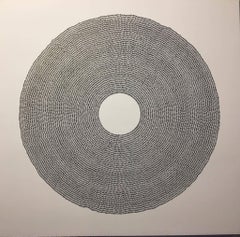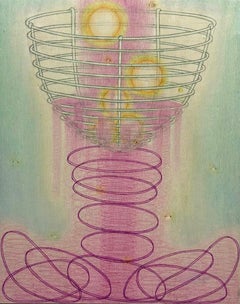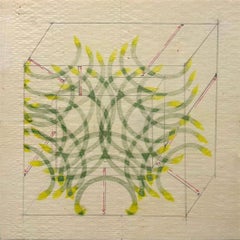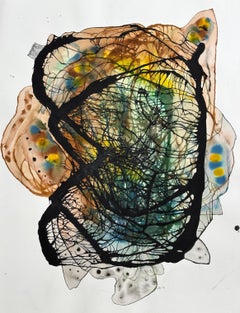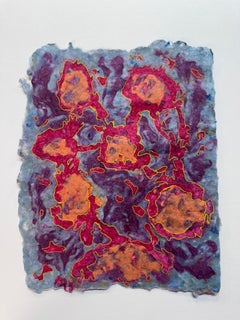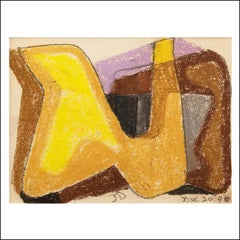New York - Abstract Drawings and Watercolors
21st Century and Contemporary Abstract New York - Abstract Drawings and Watercolors
Wood, Birch, Acrylic, Wood Panel
2010s Abstract New York - Abstract Drawings and Watercolors
Ink, Wood Panel, Color Pencil
2010s Abstract New York - Abstract Drawings and Watercolors
Ink, Wood Panel, Color Pencil
2010s Abstract Geometric New York - Abstract Drawings and Watercolors
Watercolor, Handmade Paper
2010s Abstract New York - Abstract Drawings and Watercolors
Acrylic, Handmade Paper
1960s Abstract New York - Abstract Drawings and Watercolors
Oil, Board
2010s Contemporary New York - Abstract Drawings and Watercolors
Paper, Ink
2010s Abstract Geometric New York - Abstract Drawings and Watercolors
Oil Pastel, Ballpoint Pen, Color Pencil
New York - Abstract Drawings and Watercolors
21st Century and Contemporary Abstract New York - Abstract Drawings and Watercolors
Archival Ink, Color Pencil, Watercolor
Contemporary New York - Abstract Drawings and Watercolors
Archival Paper, Graphite
2010s Abstract New York - Abstract Drawings and Watercolors
Watercolor
2010s Contemporary New York - Abstract Drawings and Watercolors
Paper, Ink, Acrylic, Watercolor, Archival Paper, Archival Ink
2010s Abstract New York - Abstract Drawings and Watercolors
Paper, Charcoal
2010s Abstract New York - Abstract Drawings and Watercolors
Paper, Charcoal
2010s Contemporary New York - Abstract Drawings and Watercolors
Paper, Watercolor, Gouache
21st Century and Contemporary Abstract New York - Abstract Drawings and Watercolors
Paper, Ink, India Ink, Rag Paper
2010s Abstract New York - Abstract Drawings and Watercolors
Paper, Acrylic, Panel
21st Century and Contemporary Abstract New York - Abstract Drawings and Watercolors
Paper, Ink, India Ink
2010s Contemporary New York - Abstract Drawings and Watercolors
Paper, Watercolor, Gouache
2010s Contemporary New York - Abstract Drawings and Watercolors
Archival Paper
2010s Abstract Expressionist New York - Abstract Drawings and Watercolors
Plastic, Color Pencil, Graphite
2010s Abstract Expressionist New York - Abstract Drawings and Watercolors
Plastic, Pigment
2010s Abstract New York - Abstract Drawings and Watercolors
Paper, Ink, Acrylic
2010s Abstract New York - Abstract Drawings and Watercolors
Watercolor, Archival Paper
2010s Abstract New York - Abstract Drawings and Watercolors
Paper, Ink, Acrylic
2010s Abstract New York - Abstract Drawings and Watercolors
Paper, Ink, Acrylic
2010s Abstract New York - Abstract Drawings and Watercolors
Paper, Ink, Acrylic
2010s Abstract New York - Abstract Drawings and Watercolors
Acrylic, Handmade Paper
2010s Abstract New York - Abstract Drawings and Watercolors
Acrylic, Handmade Paper
21st Century and Contemporary Contemporary New York - Abstract Drawings and Watercolors
Mixed Media
2010s Contemporary New York - Abstract Drawings and Watercolors
Ink, Acrylic, Watercolor, Archival Paper, Handmade Paper
New York - Abstract Drawings and Watercolors
2010s Contemporary New York - Abstract Drawings and Watercolors
Paper, Ink, Acrylic, Watercolor, Archival Paper
2010s Abstract New York - Abstract Drawings and Watercolors
Etching, Ink, Archival Ink, Acrylic, Archival Paper
2010s Abstract New York - Abstract Drawings and Watercolors
Canvas, Oil Pastel, Ink, Acrylic
2010s Contemporary New York - Abstract Drawings and Watercolors
Ink, Archival Paper
2010s Contemporary New York - Abstract Drawings and Watercolors
Ink, Archival Paper, Paper, Acrylic, Watercolor
Late 20th Century New York - Abstract Drawings and Watercolors
Paper, Watercolor
Late 20th Century New York - Abstract Drawings and Watercolors
Paper, Watercolor
Late 20th Century New York - Abstract Drawings and Watercolors
Paper, Watercolor
Late 20th Century New York - Abstract Drawings and Watercolors
Paper, Watercolor
Late 20th Century New York - Abstract Drawings and Watercolors
Paper, Watercolor
Late 20th Century New York - Abstract Drawings and Watercolors
Paper, Watercolor
Late 20th Century Contemporary New York - Abstract Drawings and Watercolors
Paper, Ink, Watercolor
2010s New York - Abstract Drawings and Watercolors
Etching, Aquatint, Photographic Paper, Photogram, Silver Gelatin
2010s Contemporary New York - Abstract Drawings and Watercolors
Ink, Archival Paper
21st Century and Contemporary Contemporary New York - Abstract Drawings and Watercolors
Ink, Watercolor, Handmade Paper
2010s Contemporary New York - Abstract Drawings and Watercolors
Ink, Handmade Paper, Acrylic, Watercolor, Archival Paper
2010s Abstract New York - Abstract Drawings and Watercolors
Watercolor
2010s New York - Abstract Drawings and Watercolors
Gold Leaf
2010s Abstract New York - Abstract Drawings and Watercolors
Paper, Charcoal
2010s Contemporary New York - Abstract Drawings and Watercolors
Ink, Handmade Paper, Acrylic, Watercolor, Archival Paper
2010s Abstract New York - Abstract Drawings and Watercolors
Watercolor
1950s Abstract Expressionist New York - Abstract Drawings and Watercolors
Paper, Mixed Media
1950s Abstract Expressionist New York - Abstract Drawings and Watercolors
Paper, Mixed Media
21st Century and Contemporary Abstract New York - Abstract Drawings and Watercolors
Wood, Birch, Acrylic, Wood Panel
2010s Contemporary New York - Abstract Drawings and Watercolors
Wood, Paper, Ink
2010s Abstract New York - Abstract Drawings and Watercolors
Paper, Color Pencil
2010s Abstract New York - Abstract Drawings and Watercolors
Paper, Color Pencil
